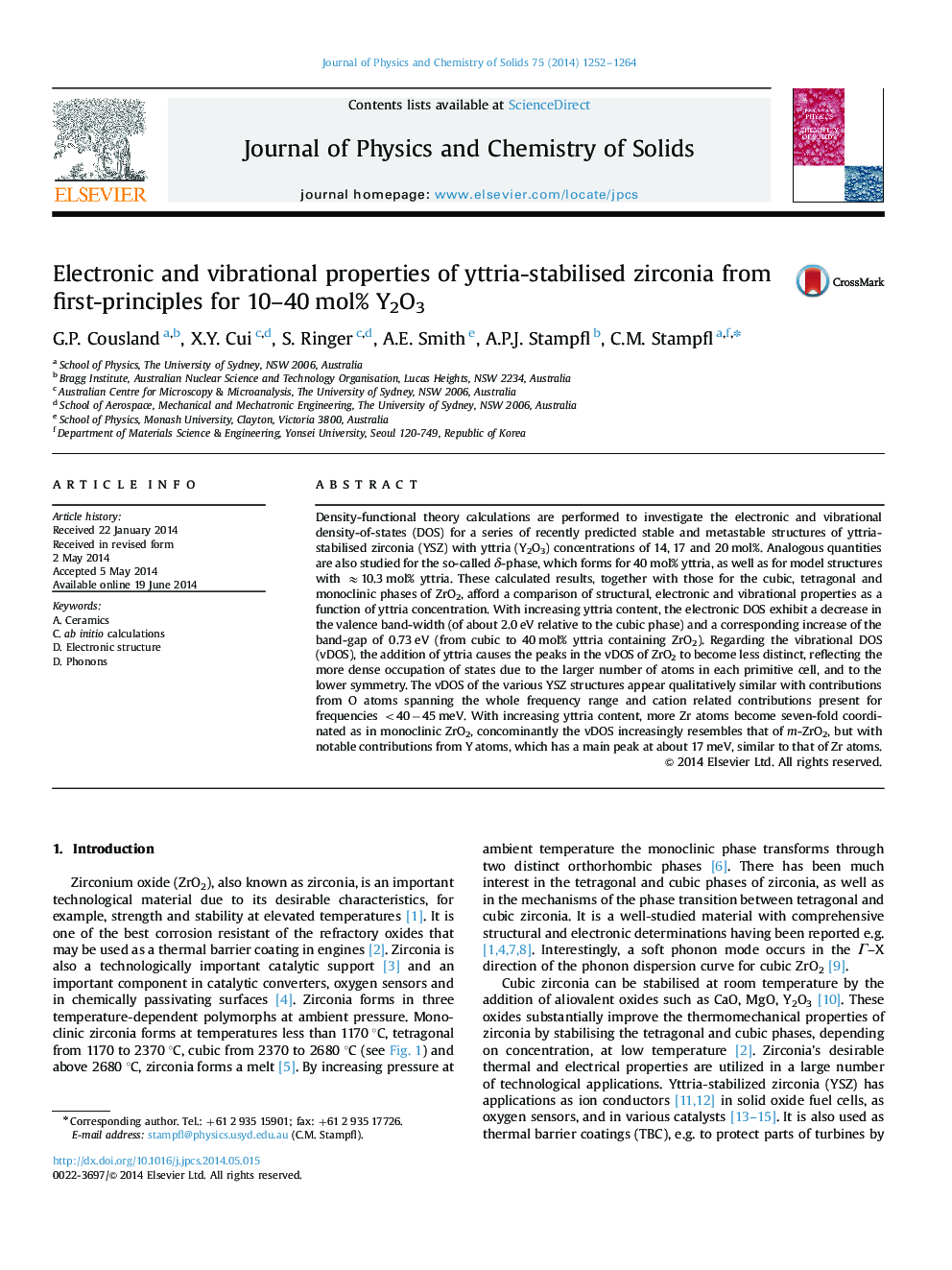| کد مقاله | کد نشریه | سال انتشار | مقاله انگلیسی | نسخه تمام متن |
|---|---|---|---|---|
| 1515760 | 1511531 | 2014 | 13 صفحه PDF | دانلود رایگان |
عنوان انگلیسی مقاله ISI
Electronic and vibrational properties of yttria-stabilised zirconia from first-principles for 10-40Â mol% Y2O3
دانلود مقاله + سفارش ترجمه
دانلود مقاله ISI انگلیسی
رایگان برای ایرانیان
کلمات کلیدی
موضوعات مرتبط
مهندسی و علوم پایه
مهندسی مواد
مواد الکترونیکی، نوری و مغناطیسی
پیش نمایش صفحه اول مقاله

چکیده انگلیسی
Density-functional theory calculations are performed to investigate the electronic and vibrational density-of-states (DOS) for a series of recently predicted stable and metastable structures of yttria-stabilised zirconia (YSZ) with yttria (Y2O3) concentrations of 14, 17 and 20 mol%. Analogous quantities are also studied for the so-called δ-phase, which forms for 40 mol% yttria, as well as for model structures with â10.3 mol% yttria. These calculated results, together with those for the cubic, tetragonal and monoclinic phases of ZrO2, afford a comparison of structural, electronic and vibrational properties as a function of yttria concentration. With increasing yttria content, the electronic DOS exhibit a decrease in the valence band-width (of about 2.0 eV relative to the cubic phase) and a corresponding increase of the band-gap of 0.73 eV (from cubic to 40 mol% yttria containing ZrO2). Regarding the vibrational DOS (vDOS), the addition of yttria causes the peaks in the vDOS of ZrO2 to become less distinct, reflecting the more dense occupation of states due to the larger number of atoms in each primitive cell, and to the lower symmetry. The vDOS of the various YSZ structures appear qualitatively similar with contributions from O atoms spanning the whole frequency range and cation related contributions present for frequencies <40â45meV. With increasing yttria content, more Zr atoms become seven-fold coordinated as in monoclinic ZrO2, concominantly the vDOS increasingly resembles that of m-ZrO2, but with notable contributions from Y atoms, which has a main peak at about 17 meV, similar to that of Zr atoms.
ناشر
Database: Elsevier - ScienceDirect (ساینس دایرکت)
Journal: Journal of Physics and Chemistry of Solids - Volume 75, Issue 11, November 2014, Pages 1252-1264
Journal: Journal of Physics and Chemistry of Solids - Volume 75, Issue 11, November 2014, Pages 1252-1264
نویسندگان
G.P. Cousland, X.Y. Cui, S. Ringer, A.E. Smith, A.P.J. Stampfl, C.M. Stampfl,